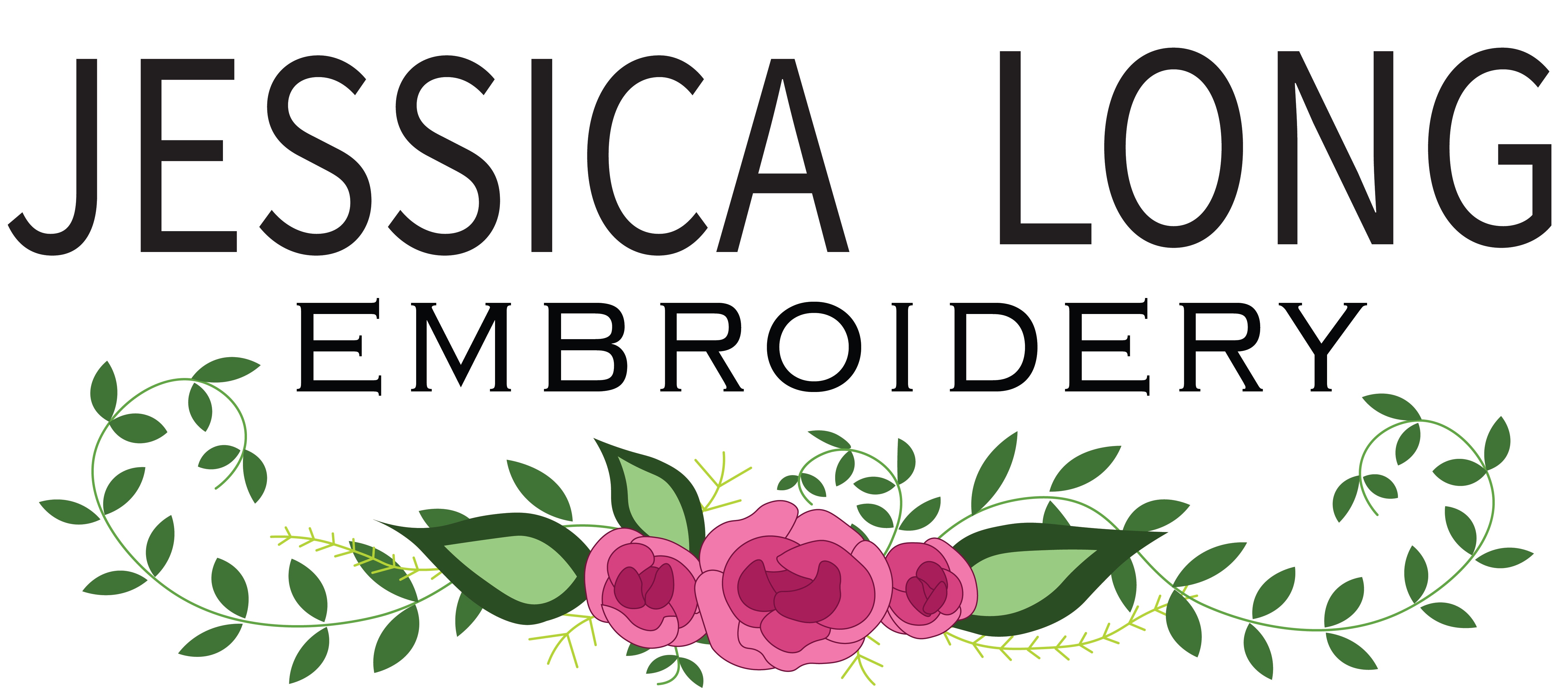Is there anything cooler than personalizing your clothes with your own needlework? Probably not. When I first set out to start decorating my clothing I was very overwhelmed with all of the different options for making patches. I got a little stuck trying to learn how to do it the "right way" before just diving in and seeing what worked for me. So I encourage you to do the same! See what you like, take it, and leave the rest. Make it your own.

So why go for a patch vs directly embroidering on your clothes? Because stitching directly on your clothes is a pain in the booty. Let's use a jean jacket as an example:
1. How are you going to get your design onto dark denim? You can't trace your design - light wont get through that thick fabric! Plus your dang pens wont show up on the fabric anyways.
2. Have you tried to get an embroidery hoop tight on a jean material before? Oh, and you want to stitch cute flowers on some pockets? GOOD LUCK.
3. Clothes like jackets are bulky and magically develop extra limbs when you are trying to stitch them. You will need an extra wide lap, thimbles for all of your fingers, and the patience of a saint to complete your project.
OR you could make a patch! Yes, you will have to take the time to attach it to your garment, but for me it is worth it.
A NOTE ON FABRIC
Choose your patch fabric based on what look and style you are going for. I see a range of materials used for patches, from cotton or linen to canvas and felt. Felt is perfect if you don't like the look of frayed edges and also don't want to take the time to stitch the edging of your patch. If you like more of a messy/frayed look then you'd want to go with linen or cotton. You can also use any combination of fabrics, stitching through two layers of fabric as you embroider. It's really up to you and your style - there is no wrong way.
So for this specific tutorial I had to pick one look and just go with it. I decided to turn my Peacock Feather design, stitched on cotton fabric with cotton floss, into a patch sealed with Heat n Bond. Yes, I know Heat n Bond doesn't really hold so well. I use it less as an adhesive and more as a method to seal my stitches, strengthen the patch and reduce fraying. Hand stitching the patch to your garment is required to guarantee adhesion.
We will start this tutorial assuming you already have a completed piece of embroidery that you are ready to transform into a patch. Be sure to trim up the backside of your hoop before you begin.
MATERIALS
- Your completed embroidery
- A pen
- Heat n Bond
- Scissors
- An iron and ironing board
- A pre-washed article of clothing to decorate
- Thread to match your design or fabric
- A needle
READY GO!
1. Determine the size and shape of your patch. You can cut your patch tight to your embroidered work like I did, or use a guide (like an embroidery hoop, pictured) to trace a patch with a different shape. Use a pen to mark out your shape but do not cut anything yet! I was originally going to go for a circular shape but ultimately decided to follow the line of the peacock feather for this patch.

2. Cut a piece of Heat n Bond to match the size of your patch. It's better to cut a piece larger than your final patch, but be sure to make it smaller than the piece of fabric your work is stitched on. If your Heat n Bond piece is larger than your fabric you will be gluing it to your ironing board in the next step! Yes I have done this.
3. Place your embroidery face down on your ironing board. Center your Heat N Bond, paper side up, on the back of your work. Use a pre-heated iron for 1-2 seconds over your work. Use the pointy end of your iron to help seal any irregular edges around the entirety of your embroidery. See the directions that came with your Heat N Bond for additional information!

4. Use scissors to cut the patch into your desired shape. Use care to avoid cutting any of your embroidery stitches if you choose to trim close to your needlework.

5. Remove the paper backing from your patch. Check out how cool it looks!

6. Place your patch on your destination fabric and use a hot iron to (sort of) secure it. I use the light amount of adhesion gained in this step to help keep my patch in place while I secure with stitches.

7. Stitch the perimeter of your patch to secure it. I used a single strand of embroidery floss doubled over (so 2 strands thick when stitching) and stitched along the teal outline of my embroidery.


8. Rock your new outfit like the super star you are! Use care when washing your new garment. Hand washing is always advised for hand embroidery work.

